Chamba Chapter
3 - 7 Feb 2024
CompletedOverview
Chamba Chapter brings to you the splendor of the hill temples of Himachal Pradesh built in three different styles in the Chamba district, along the valley of the Ravi River.
You will see how every corner of the Chamba district is connected with the Mani Mahesh Kailash legend. You will see how cosmology sacralizes geography and how the presence of the sacred geography in legends legitimizes cosmology. You will also get to see the trinity of sacred grove, sacred lake, and sacred temple. If you are up for this adventure which will leave you with not just exquisite memories but the learning of a lifetime, then come join us in the Chamba chapter of Bá¹hat Anveṣī.
Highlights
Wonderful confluence of margīya and desīya tradition.
Safeguarded Hidden Temples: Temples protected and preserved by Locals
A Bhandara (annadānam) and pahādi food.
Witness Sacred Trinity: Sacred Temple, Lake and Grove
Pristine Himalayan villages and Mani Mahesh Kailash Parvata
Sūtradhāra - Your Temple Expert

Pankaj Saxena
Pankaj is an author on Hindu temples, arts, literature, history and culture. His writing explains the beauty of Sanātana Dharma through stories about traditions, communities and culture. He has a deep interest in cultural anthropology, evolutionary biology and ecology, and has visited more than 1600 Hindu temples.
Interested in this chapter?
We do not plan to repeat previously completed chapters in the near future. However, if you have a group of 15–20 interested individuals who'd love to explore this chapter, do write to us. We'd be happy to create a special on-demand Anveṣī experience just for your group.
Temples Covered
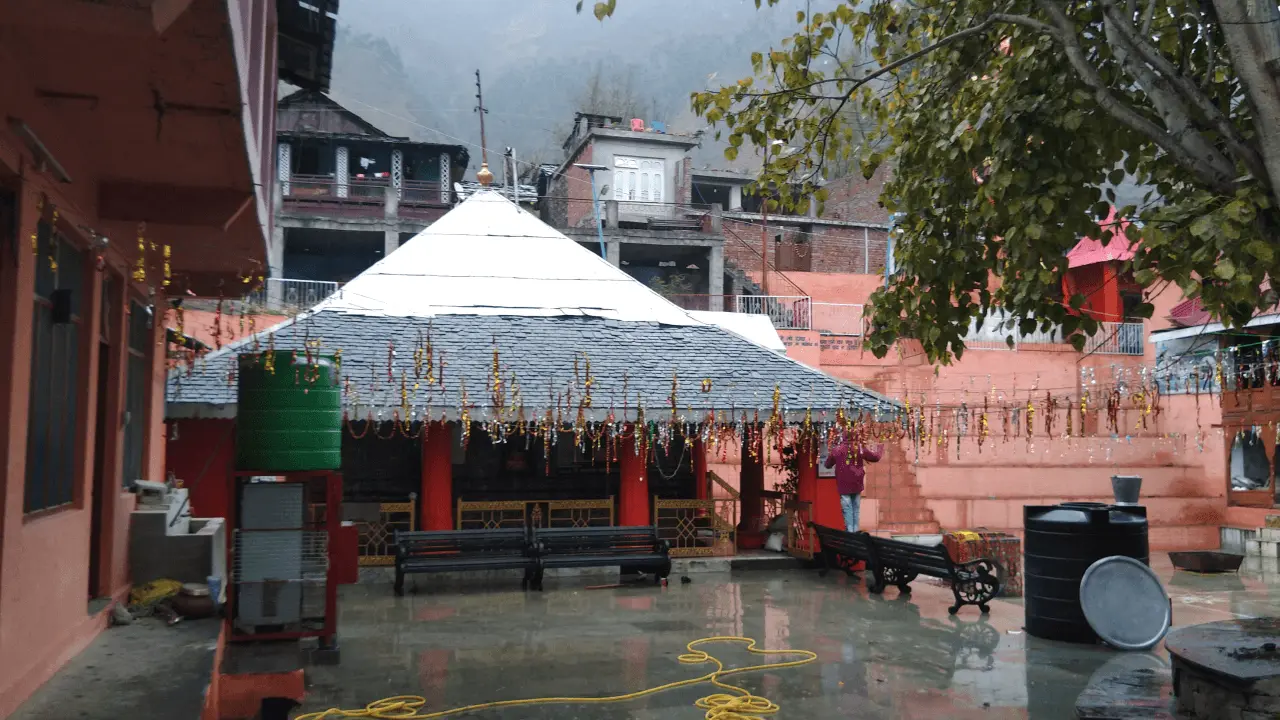
Chandrashekhar Temple, Saho
Built in the pahāḍi style with pagoda like roof topped with stone slates, this temple in the picture perfect village of Saho, nestled high up on a plateau with mountains providing backdrop from all sides. It is dedicated to Śiva in the form of Chandrashekhar. The temple legend binds this temple with the Chandragupta temple in Chamba on one hand and the Mani Mahesh temple in Bharmour on the other, binding the sacred geography of the entire district together in one legend. The Śiva linga in the temple is the largest in Himachal.
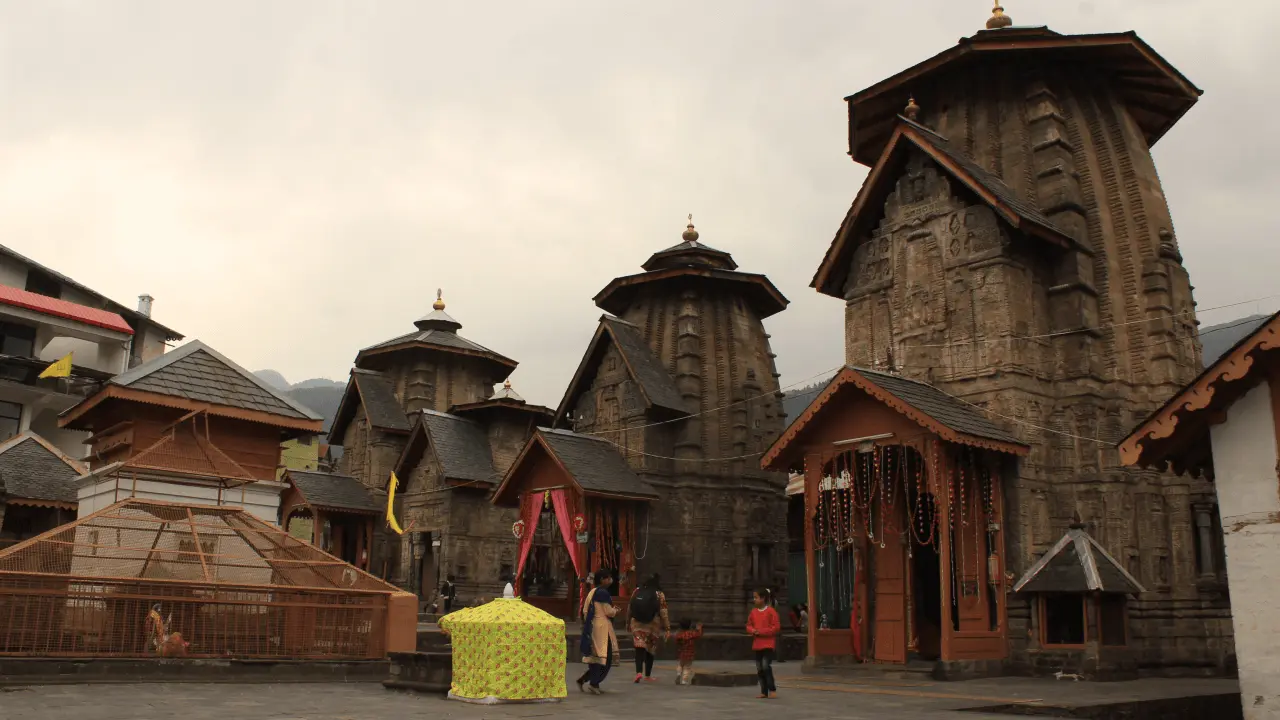
Laxmi Narayan Temple Complex
Laxmi Narayan Temple Complex contains around six temples the most important of which is the Laxmi Narayan temple. The temple complex lies in the middle of the Chamba town and is the centre of an organic community organized around a living temple. Built in 920 CE by Raja Sahil Varman, the temples are built in stone and the architecture is Nāgara with the pahāḍi sub-style elements displayed prominently like the sloping wooden or metal roofs at the top and over śukanāsika and manḍapa. The manḍapa is added later on with wooden extensions and the temple is mostly garbha-gṛha with a small antarāla or śukanāsika. Other temples in the complex are Chandrashekhar, Gaurshankar, Lakshmi Damodar, Radha Krishna, Tryambakeshvara and Hanuman temple.

Harirai Temple, Chamba
Harirai Temple, dedicated to a unique form of Vishnu is situated near the banks of the Ravi river, and in many ways, is the centre of the Chamba town. It houses a unique Vishnu vigṛha which has four faces, three of which are visible and they are in human, lion and boar forms. Built in the 11th century by Salabahana it has a Nāgara style śikhara with a small antarāla and wooden manḍapa and the usual wooden eaves protecting it from snow and rain in the typical pahāḍi style. The temple legend says that earlier Vishnu changed the course of the Ravi river by bending it with his finger and this temple is the one which still holds its flow to one side, letting the city thrive on the vacated ground.

Champawati Temple
Weaving the history and legend of Chamba city, this temple is the third and last one built by the great king Sahil Varman. The temple is dedicated to an eight-armed Durga. It is said that the king once suspected that his daughter Champavati was secretly in a relationship with her tutor, who was a great scholar. He went after them one day with a sword in his hand but found no one. It was conveyed to him that because he disrespected the pure relationship of the teacher and a pupil, he would be eternally separated from his daughter. He repented his actions and then built a temple in his daughter’s memory and named the town Chamba after his daughter Champa. It is also said that the area had many Champaka trees and so the ancient name Champakapura of the city comes from this. The temple is the centre of the town in many ways and is built in Nāgara style with typical Himachali wooden eaves to protect it from snow and rain.

Vajreshvari Devi, Chamba
Located at one end of the Chamba town, at an elevated place, the Vajreshvari Devi temple lies in a pristine location. The nearness of the mountains is palpable in this stone temple built in Nāgara style with a high śikhara with a small antarāla and no manḍapa. The manḍapa is wooden and added later. The bhadra niches on three sides depict three different aspects of Goddess Durgā: Mahiśasuramardini, Siṃhārūḍha Durga and Annapūrṇā. The temple is dedicated to the Vajreshvari aspect of the Great Goddess. This aspect of the goddess is very famous in Himachal Pradesh and particularly Chamba district.

Chamuda Devi Temple, Chamba
While all the other great temples of Chamba are built in Nāgara style and in stone, this temple is built in pahāḍi pent-roof style of architecture with wooden structure topped by a sloping pent-roof covered with stone slates. It stands on the spur of a hill, commanding a vantage view point of all of Chamba situated on the banks of the river Ravi. It is said that the original temple was built by Sahil Varman almost ten centuries ago, but the present temple structure was built in the 18th century. The temple contains beautiful carvings on its wooden pillars and ceilings. The temple is dedicated to Chamunda.
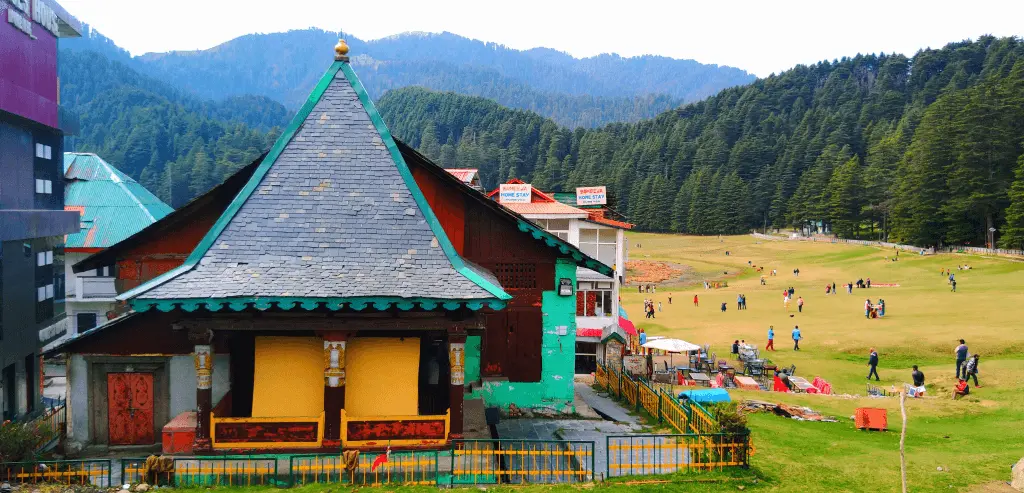
Khajjiar Nag Temple
This 12th century temple built in wood, in the pent-roof pahāḍi style with stone slates over the roof lies in Khajjiar, which is famous amongst tourists coming to Dalhousie. Very few know it is one of the most sacred spaces in Chamba and Himachal. The temple lies in front of the sacred Khajjiar lake, surrounded by the sacred grove of ancient trees on all sides, displaying the trinity of sacred lake, sacred temple and sacred grove. In hilly areas, flat areas like this with a depression at the centre are considered extremely sacred and are often provided with a great Nāga temple dedicated to the desīya tradition of the kṣetra. The temple has a Mahabharata legend as it is believed that the Pandavas came to hide here in their year of secret living and one can find the vigṛhas of Pandavas on the pillars of the Khajjiar Nāg temple.

Chaurasi Temple, Bharmour
In the ancient city of Bharmour, the early capital of the Chamba kings, in the backdrop of the magnificent snow-laden Mani Mahesh Kailash peak, on the top of a table top mountain lies this temple complex called the Chaurasi temple because it has 84 small and big temples right in the middle of nowhere. The oldest temples here are 1400 years old with many added later during the time when Bharmour was the capital of the Chamba kings, specially under King Sahil Varman.
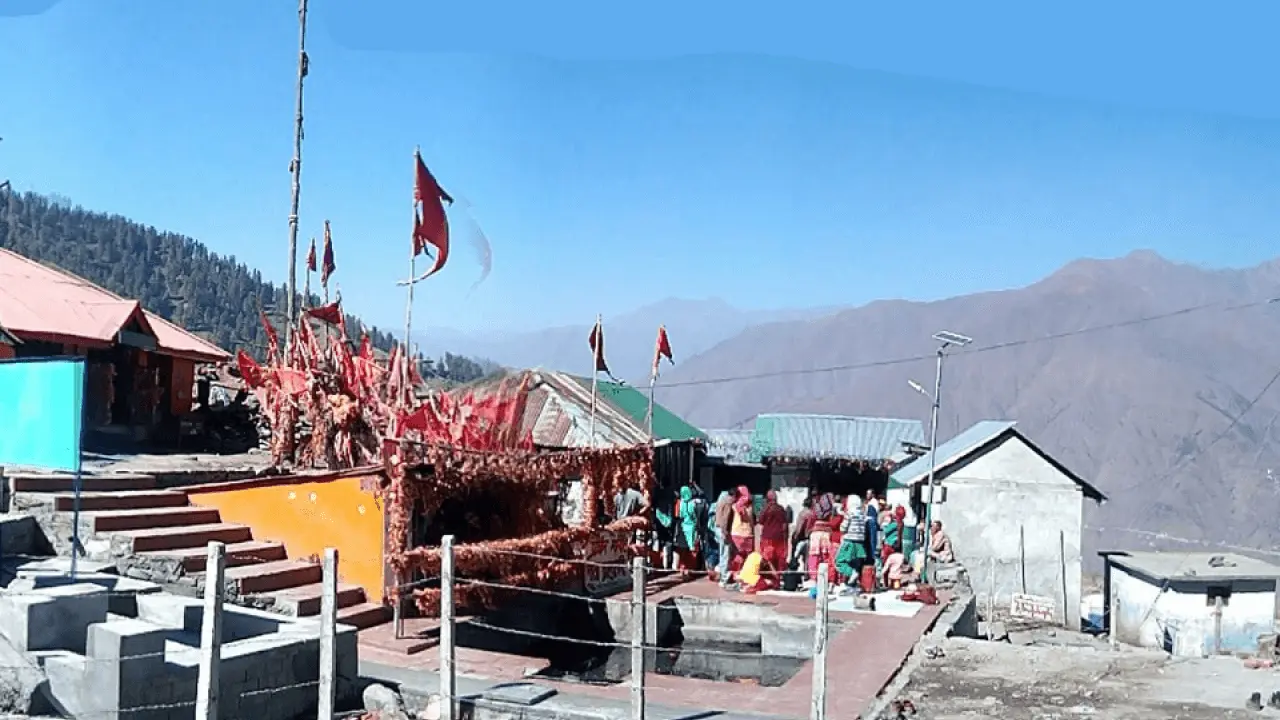
Brahmani Mata Temple, Bharmour
At the hill-top near Bharmour this is a very famous temple dedicated to a form of Durga. It is said that the 84 siddhas or yogīs had meditated at Bharmour on their way to Mani Mahesh Kailash, and that is why 84 temples exist there. And they had then bathed in the sacred pool at Brahmani Mata temple at the hill-top before proceeding to Mani Mahesh lake. It is said that any Yātra towards the Mani Mahesh lake is not complete without taking a sacred dip here.
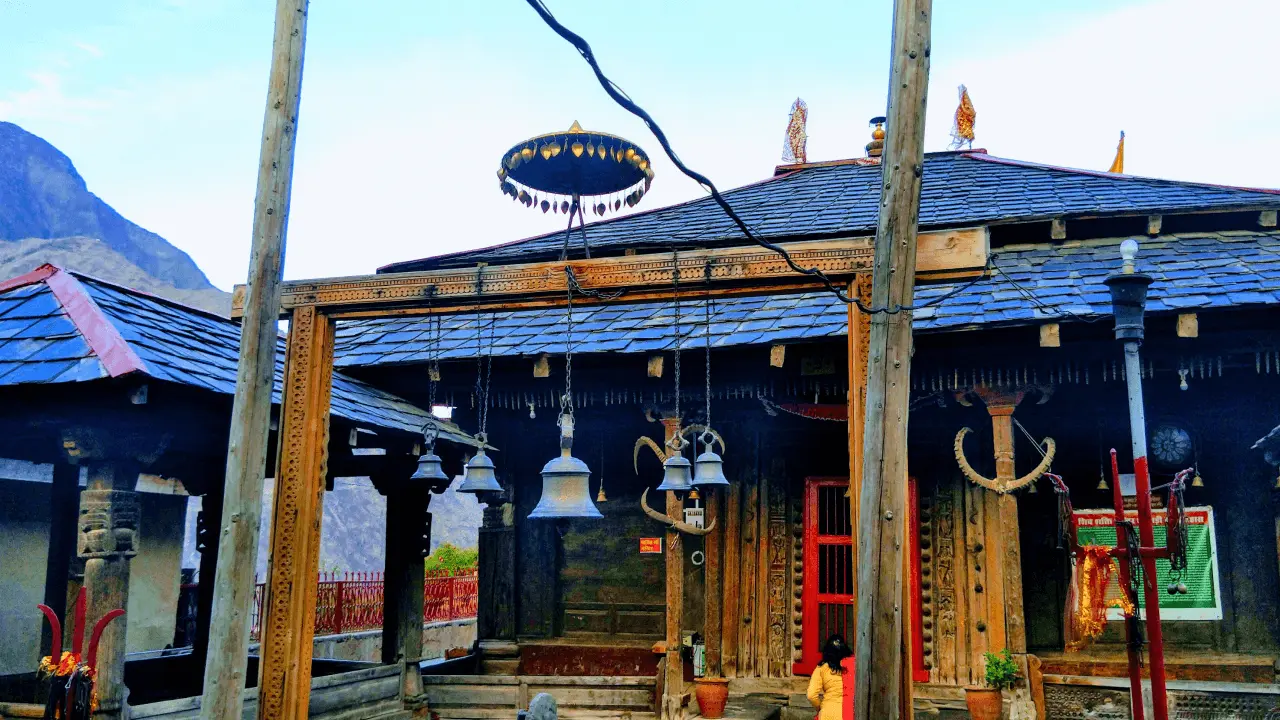
Shakti Devi Temple, Chhatrari
This temple is nestled on a very high mountain six thousand feet above sea level, right on the banks of the river Ravi, with a clear view of the Mani Mahesh Kailash. If Bharmour is famous for the Mani Mahesh temple dedicated to Śiva, this temple at Chhatrari is famous for the Śakti Devi temple which completes the sacred circuit of Chamba. The vigṛha here is 1200 years old as the temple was never desecrated due to its remoteness. The vigṛha is made of aṣṭadhātu showing Durga with a lance, lotus, bell and a snake. Pilgrims bring sacred water of the Mani Mahesh Lake and bathe the vigṛha of the goddess with those waters here.